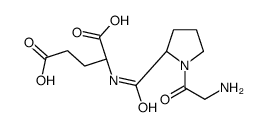Central penetration and stability of N-terminal tripeptide of insulin-like growth factor-I, glycine-proline-glutamate in adult rat.
A M Baker, D C Batchelor, G B Thomas, J Y Wen, M Rafiee, H Lin, J Guan
文献索引:Neuropeptides 39(2) , 81-7, (2005)
全文:HTML全文
摘要
Insulin-like growth factor-I is a neurotrophic factor and can prevent neurons from ischemic brain injury. However, the large molecular weight and metabolic effects can be problematic in its central delivery. Glycine-proline-glutamate (GPE) is the N-terminal tripeptide of insulin-like growth factor-I, which is naturally cleaved in the plasma and brain tissues. GPE reduces neuronal loss from hypoxic-ischemic brain injury following central administration. Central penetration and the stability of GPE in the plasma and central nervous system were examined in rats using radioimmunoassay and HPLC. GPE was rapidly metabolised in the plasma (8 min) after intraperitoneal administration. Despite having a short half-life in plasma, GPE was detected in the cerebrospinal fluid up to 40 min after intraperitoneal administration. With present of peptidase inhibitors, GPE existed in the brain tissue up to 3 h after intracerebroventricular administration, suggesting a role for peptolysis in its stability. The endopeptidase inhibitors 4- (2-aminoethyl) benzenesulfonyl fluoride hydrochloride (AEBSF) reduced GPE metabolism in the brain tissue while acid peptidase inhibitor pepstatin-A decreased GPE metabolism in the plasma. GPE reduced neuronal loss in the CA1-2 sub-region of the hippocampus given (intraperitoneally) after 30 min of hypoxic-ischemic injury in adult rats, further suggested the effectiveness of GPE central uptake. These results indicated that GPE crosses the blood-CSF and the functional CSF-brain barriers. The longer half-life of GPE in the CNS may be due to its unique enzymatic stability.
相关化合物
| 结构式 | 名称/CAS号 | 分子式 | 全部文献 |
|---|---|---|---|
 |
甘氨酰-脯氨酰-谷氨酸
CAS:32302-76-4 |
C12H19N3O6 |
|
Ethyl acetate extract from Glycosmis parva leaf induces apop...
2015-04-01 [Pharm. Biol. 53(4) , 540-7, (2015)] |
|
Analogues of the neuroprotective tripeptide Gly-Pro-Glu (GPE...
2005-05-02 [Bioorg. Med. Chem. Lett. 15 , 2279-83, (2005)] |
|
Phospholipids trigger Cryptococcus neoformans capsular enlar...
2011-05-01 [PLoS Pathog. 7 , e1002047, (2011)] |
|
N-terminal tripeptide of IGF-1 (GPE) prevents the loss of TH...
2000-03-24 [Brain Res. 859(2) , 286-92, (2000)] |
|
Neuroprotective effects of the N-terminal tripeptide of IGF-...
2001-12-13 [Brain Res. 922(1) , 42-50, (2001)] |